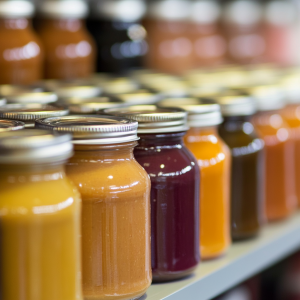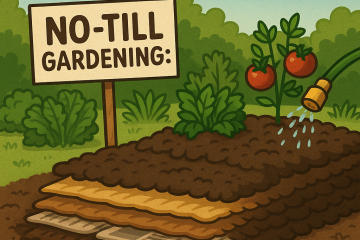
homemade baby food
While preparing main dishes for your family is necessary, it’s important to consider food for the non-nursing babies as well. Due to the lack of preservatives in most baby foods, it’s likely that it’s not feasible to have enough “traditional” baby-friendly foods stored in the event of survival living. It also takes up a lot of valuable storage space. If you’ve read my articles previously, then you know that I’m always trying to save space and find items that serve multiple purposes. I take the exact same approach to food. The nutritional value in baby food will deplete dramatically as it is stored, and yet in an emergency, it’s critical to ensure your child is getting the maximum nutrition in order to counteract the inevitable changes he or she will undergo. So here are a few tips so that you can easily make your own infant-palate foods from the preparedness supplies that you’ll hopefully already have on hand. The key to success in creating baby foods is to have a non-electric hand blender/beater available. I would recommend a good hand potato masher or a potato ricer as well. These are great tools, not only for what you can prepare for the rest of your family, but for creating ideal baby food as well without electricity. Obviously making the foods smooth and edible for the smallest tykes is a critical component of their foods. Yes, you’ll need a little bit of elbow grease to make their food, but you can typically do so from what you’re preparing for the rest of the family with some small modifications–and yes, that includes simple freeze-dried foods–Yay! After beating the food well with your blender/beater, check for smoothness. To do so just take a small amount of puree between your fingers; rub fingers together. If you feel any large particles, then be sure you keep beating the food. Junior or toddler foods should contain some larger particles, so they will require a little less blending. Also keep in mind that you can add finely ground cereals to any of your baby’s food (meat, vegetable, and fruit) to ensure appetite satisfaction and the appropriate amount of fiber. This can include rice, barley, lentils, and oats. Remember, everything should be very soft, well-cooked, unsalted for the most part and unseasoned. Also be sure that your foods do not contain nitrates in them as they are very toxic to small children’s bodies. I also strongly recommend that you do NOT use freeze-dried ENTREES as baby food as they typically contain a LOT of salt that the little munchkin does NOT need.
The key to success in creating baby foods is to have a non-electric hand blender/beater available. I would recommend a good hand potato masher or a potato ricer as well. These are great tools, not only for what you can prepare for the rest of your family, but for creating ideal baby food as well without electricity. Obviously making the foods smooth and edible for the smallest tykes is a critical component of their foods. Yes, you’ll need a little bit of elbow grease to make their food, but you can typically do so from what you’re preparing for the rest of the family with some small modifications–and yes, that includes simple freeze-dried foods–Yay! After beating the food well with your blender/beater, check for smoothness. To do so just take a small amount of puree between your fingers; rub fingers together. If you feel any large particles, then be sure you keep beating the food. Junior or toddler foods should contain some larger particles, so they will require a little less blending. Also keep in mind that you can add finely ground cereals to any of your baby’s food (meat, vegetable, and fruit) to ensure appetite satisfaction and the appropriate amount of fiber. This can include rice, barley, lentils, and oats. Remember, everything should be very soft, well-cooked, unsalted for the most part and unseasoned. Also be sure that your foods do not contain nitrates in them as they are very toxic to small children’s bodies. I also strongly recommend that you do NOT use freeze-dried ENTREES as baby food as they typically contain a LOT of salt that the little munchkin does NOT need.
If relactating isn’t an option for you, and your infant isn’t up to eating even soft baby foods yet (under 6 months of age), then you can make your own baby formula. Combine 6 tablespoons of nonfat dry milk, 2 teaspoons of quality vegetable oil or coconut oil, and 1 teaspoon of sugar (ONLY REAL SUGAR—no alternatives. Coconut sugar would be great as well.) in one cup of purified water (boiled, pasteurized, etc.). Thoroughly mix all the ingredients and allow the mixture to cool to room temperature before serving to your child. Here are some other baby food recipes.
Chicken Custard for Babies
¼ cup chicken broth 1 egg ½ cup cubed cooked potatoes (or mashed potatoes) ½ cup cubed cooked chicken Blend all ingredients together until smooth. Place into small greased casserole dish then place in a water bath. Bake at 350 degrees for 25 minutes or until a knife in the center comes out clean. You will have two “custard-like” meals.
All in One Meal
 ½ cup of prepared milk (powdered or evaporated is fine) ½ cup cubed beef or veal 2 tablespoons of cooked carrots or peas 4 tablespoons of cooked rice Blend all ingredients together until smooth. Heat before serving. Makes 2-3 servings
½ cup of prepared milk (powdered or evaporated is fine) ½ cup cubed beef or veal 2 tablespoons of cooked carrots or peas 4 tablespoons of cooked rice Blend all ingredients together until smooth. Heat before serving. Makes 2-3 servings
Cottage Cheese Custard
¾ cup hot of prepared milk (powdered or evaporated is fine) ½ cup of cottage cheese (remember, this can be easily made from powdered milk) 2 tablespoons of light corn syrup 1 egg Nutmeg—optional Blend all ingredients together except for the nutmeg. Pour into small greased casserole dish and then sprinkle lightly with nutmeg. Place casserole dish in a water bath and bake 40 minutes or until inserted knife comes out clean. Cool to lukewarm before serving. Makes 3 servings.
Apricot Pudding
½ cup dried apricots 1 ½ cup of prepared milk (powdered or evaporated is fine) ¼ cup sugar (Note: never substitute sugar for honey or other sweeteners due to potential health hazards to the baby) 2 tablespoons of cornstarch Soak apricots in milk overnight or at least 5 hours. When ready to prepare, blend the milk and the apricots well until the mixture resembles a puree. Then add the sugar and cornstarch. Blend until smooth. Heat in a saucepan on medium-high heat until it comes to a boil, stirring constantly. Cool to lukewarm. Makes 4 servings.




12 Comments
Sheryl · January 24, 2013 at 4:26 am
With our first grandchild due the first of June, this is a very timely article for us. Thank you so much, Kellene!
Linda · January 24, 2013 at 9:02 am
For seven children and several grandchildren we have used a baby food mill. They were hard to find for awhile, but are available again. The ones I purchase and keep on hand for baby gifts are made by KidCo. They work great, are small and portable and you can feed the baby from the food mill after you blend and puree the food. No batteries or electricity needed and easy to use.
Cindy Goforth · January 24, 2013 at 12:46 pm
Thanks Kellene!
This Grandma is thankful to have this info. I used to have recipes for emergency baby formula. Fortunately Mother Nature never failed us. I hadn’t thought about needing to file this away in print. Every day something new pops into mt radar! It seems I’ve never thought of everything.
My daughter is great at knowing what a young family needs. So i tend to let her plan for those their needs. But, I’ll be filing this recipe too. Currently all the young are over a year old, but there will hopefully always be the need to care for new life.
Danelle · January 24, 2013 at 3:03 pm
Thanks for this info. I am not a grandma yet, but my girls are getting close to the age of striking out on their paths and all the fun that comes with starting a life of their own. Having some recipes for baby type foods could definitely come in handy, and was something I never thought to include. This info could become very valuable to many around me as well. Thanks again.
Elizabeth · January 24, 2013 at 3:18 pm
Laugh if you want, but, when I had a couple of surgeries in the past few years, rather than eat the swill sent up as “post-surgery food”, I took jars of organic baby food with me at at those! And also snacks, too, and bottles of pure, clean spring water (and a little junk food, I confess!).
Elizabeth · January 24, 2013 at 3:18 pm
I meant to say, “and ate those”, of course….clumsy hingers!
Carrie · January 24, 2013 at 4:06 pm
These great tips on making baby foods are also helpful in making foods for the elderly who have eating or chewing problems! Thank you Kellene!
Kellene Bishop · January 25, 2013 at 12:27 am
Foodmills are readily accessible at any restaurant supply or cooking supply stores.
Linda · January 25, 2013 at 2:19 am
True Kellene and they are great for larger amounts. I like the baby food mills because you can take them with you or use them at home and just make enough baby food for a meal.
Thanks for the great info and all you do.
Suzie Q · January 25, 2013 at 12:40 am
When you said the gals in the Philippines were nursing until age 5, I immediately thought of Sarah – Abraham’s wife in the Bible; she nursed Isaac until age 5, too. Living as nomads, I’m sure she faced hardships, too.
candice · January 29, 2013 at 10:35 pm
Did you know that you can make baby food out if freeze dried veggies and fruits? I have been using freeze dried fruits and veggies from srmarketplace.com to make my own baby food. They do NOT have added sugar and preservatives. Another great thing is that it only takes a few seconds to make the food and nothing ever spoils. Just take a few tablespoons of say broccoli, chop it up in your blender, add a little warm water… done! We have stored a year of food for our family including our baby. With a 25 year shelf life freeze dried food just can’t be beat!
cynthia · January 30, 2013 at 11:33 pm
Extended nursing is also helpful for mother as well as nursling. Many children, if allowed, will self-wean past the age of three. The good mothering hormones from nursing might well be needed in an emergency.
I never had “baby” food on hand. I always just let our babies eat small amounts of whatever we were eating. This also helps create adventurous palates.
The tried and true oatmeal, rice and mashed potatoes are usually part of most families’ preparedness.
Thanks for keeping the updates so timely and focused. I really enjoy the posts.
Comments are closed.